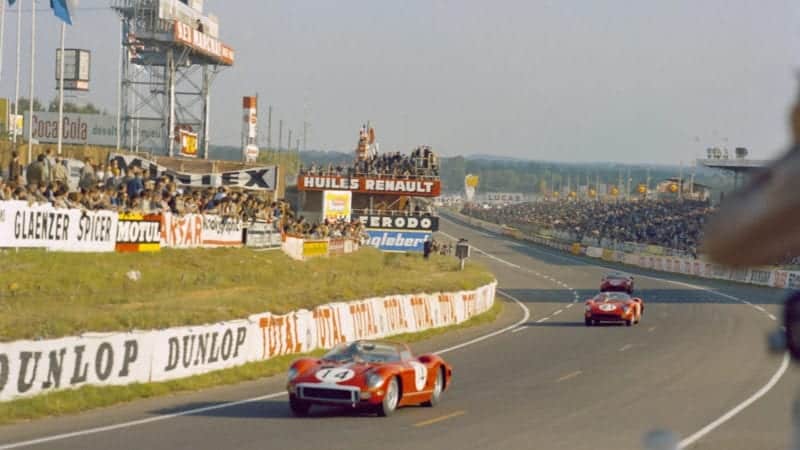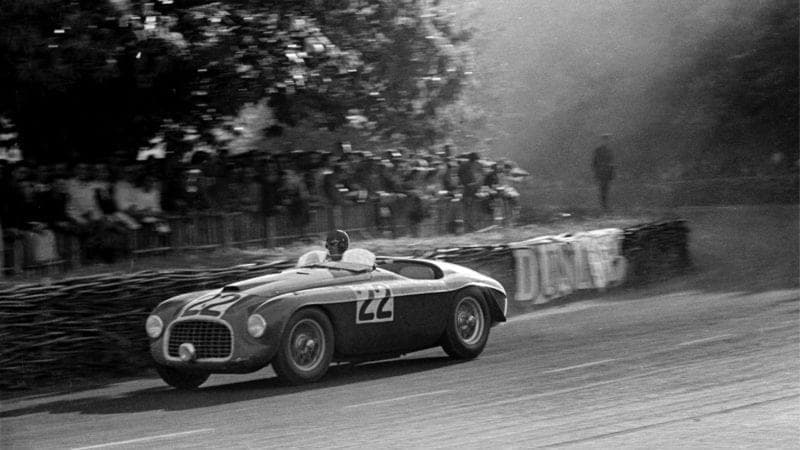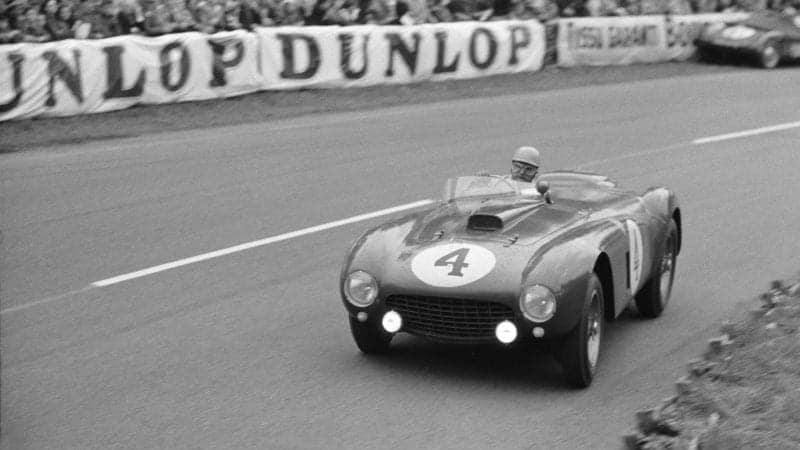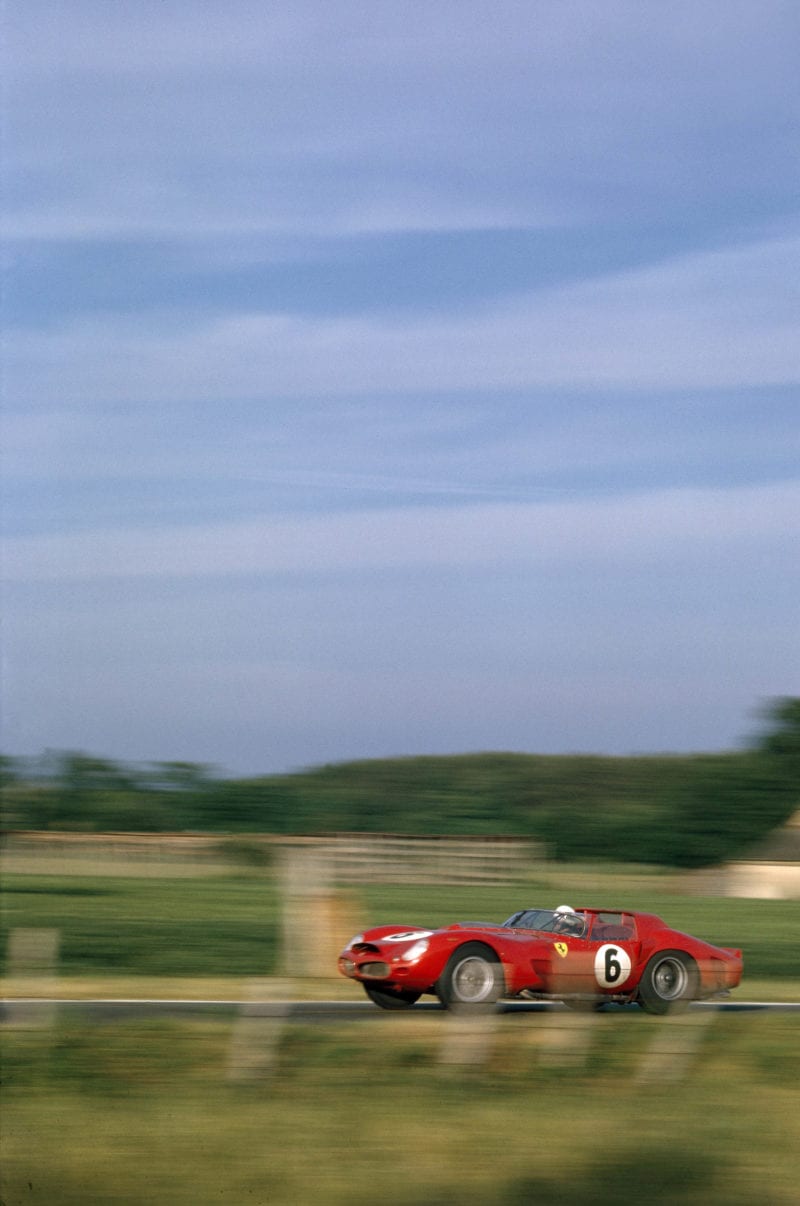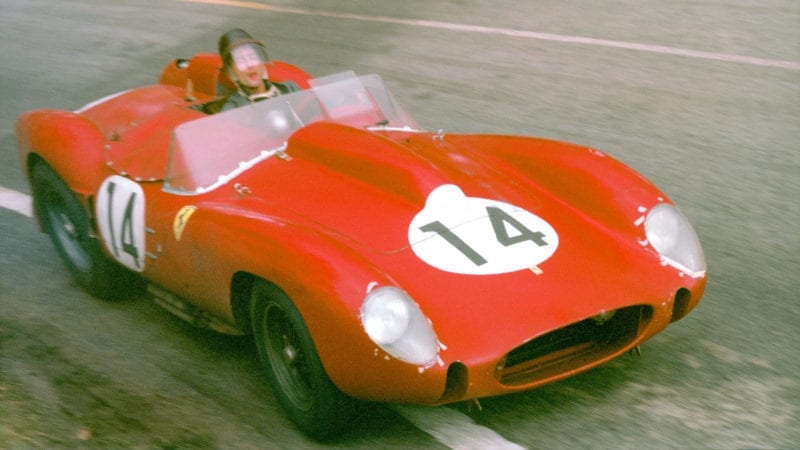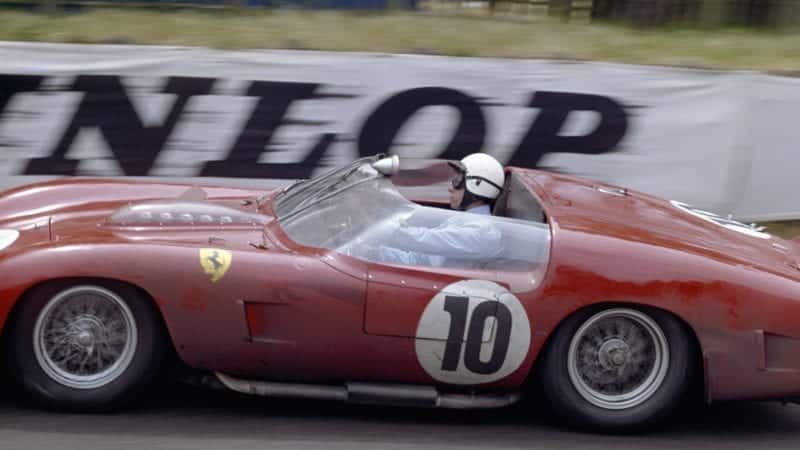I’m not going to dwell for long on the 1965 race because Doug Nye has covered it recently and the failure of both the works Ferrari and Ford teams is well documented, as is the victory of the utterly unfancied NART 250LM of Rindt and Gregory and the probably untrue fable of one Ed Hugus doing a night time stint when no-one else was looking. But it does amuse me that the single biggest threat to the car’s win in the closing hours came from none other than Ferrari itself, possibly even Enzo Ferrari himself. The car was battling it out with an equally private Belgian LM, the biggest difference between the two being the Belgians were on Dunlop tyres, the NART car on Goodyears, and Ferrari was contracted to Dunlop. So an emissary was sent to tell the NART team that it would be most helpful if the Dunlop-shod car be allowed to win. They reckoned without the boss of NART, who made his feelings on the subject of throwing the race to suit Ferrari very clear. That boss? None other than Luigi Chinetti, the man responsible in very large part for both Ferrari’s first and most recent Le Mans wins.
Ferrari had no answer to the Fords for the next four years nor the Porsches in 1970 and 1971. But with the new 3-litre formula in 1972 Ferrari had a golden opportunity to return to winning ways. Its 312PB was so much better than anything else it won 10 of the 11 rounds of the championship that year and only failed in the 11th by not entering it. That race was Le Mans. Why? Essentially because Matra had taken a diametrically opposed strategy and forsaken all other races that year to focus its efforts on Le Mans alone. And it worked. Despite Ferrari being fastest at the test weekend, despite their being four 312PBs in the entry list, one week before the race they were all withdrawn giving its rival the clear run to victory it craved.
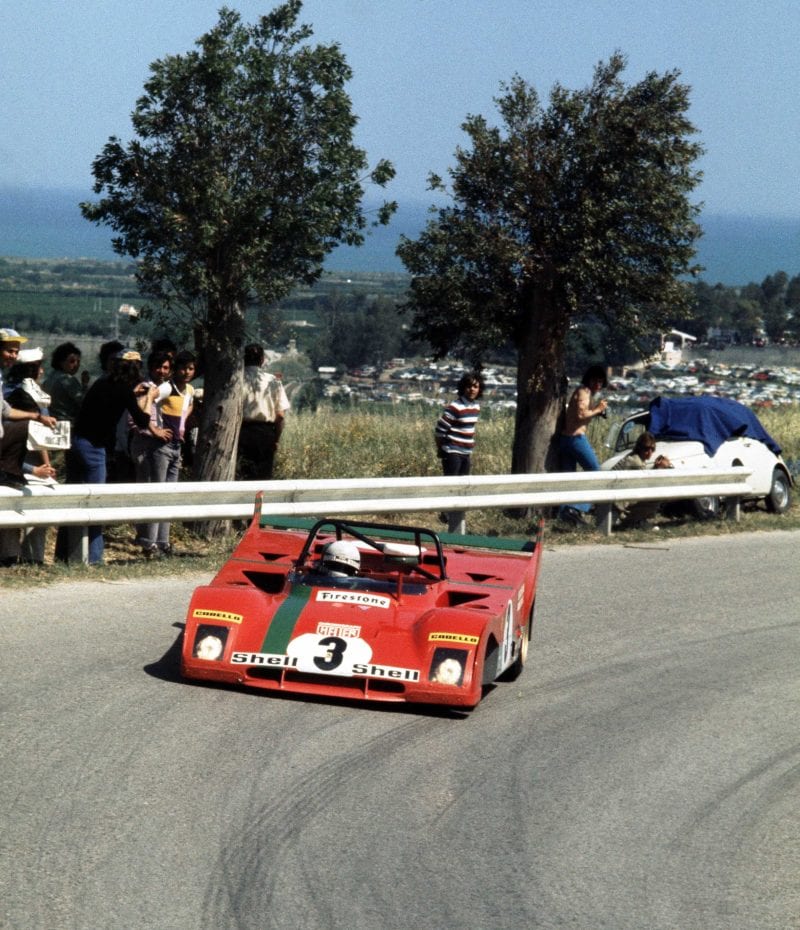
Arturo Merzario on his way to Targa Florio victory in 1972 – but the 312PB wouldn’t race at Le Mans that year
Klemantaski Collection/Getty Images
By contrast, the 1973 was a fine effort, promoted by the ACO as an epic battle between Matra and Ferrari on the 50th anniversary of the original running of the race. And it lived up to its billing. Ferrari certainly had the pace, the 312PBs lining up first and second on the grid with the Matras behind, but the cars proved fragile. A wonderful night time battle between the Ickx–Redman Ferrari and Larrousse-Pescarolo Matra ended when the Ferrari developed a fuel leak and then blew its engine fighting back through the field. By then the sister car of Reutemann and Schenken was already out with the same malady, leaving just the car of Merzario and Pace to fight the cause. And if it too had not suffered a fuel leak and the need to change the clutch maybe the outcome would have been different. In the end it merely split the surviving Matras, beating one by no fewer than 18 laps, but still six laps behind the winner.
And that was it: Ferrari retired its factory sports car team and every one wondered when it would be back. Few, I imagine, would have bet it would take 50 years.
